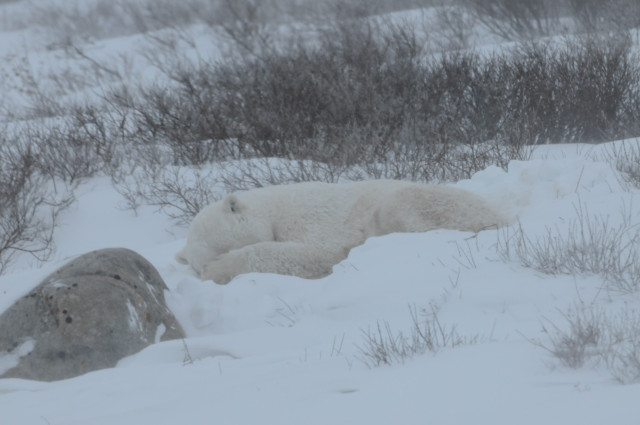
Storm season
As the ever weakening dawn light rouses me in my window perch, I notice something has changed- wind. In Churchill as in much of the Arctic, windstorms are a common occurrence and can drastically change your plans for the day, whether you’re a bear or a person!
This morning the winds are coming straight out of the North and right off the Bay. It gently rocks our buggy and whistles through the many gaps and cracks around doors and windows. Luckily for us, it’s still relatively warm with temps hovering around -10 C.
Windy days often mean less activity for wildlife as well. Polar bears in this part of the world all come ashore in July because the ice completely melts each summer in Hudson Bay. Once onshore, most of these bears begin fasting and go into what scientists call a “walking hibernation”. They spend much of their time resting and waiting and can actually turn down their metabolism to conserve what stored energy they have onboard. As the weather gets colder in November, the bear’s activity starts to increase as they prepare themselves for the coming freeze. Today, however, the wind keeps them down and most find a quiet, protected spot to simply curl up and nap the day away.
Unfortunately, for bears here in Western Hudson Bay, the sea ice is melting earlier and freezing later on average. This means bears have a shorter time to put on weight in the spring and a longer fast each summer. Adult bears in good condition can go incredibly long periods without eating substantial calories. Pregnant females, dependent young and subadult bears are not so fortunate. Without enough stored calories, pregnant females are less successful raising families and the young bears that are weaned have a harder time surviving their first years alone. The reduction in survival has lead to a long term decline in this population that is expected to continue. But for now, to the casual observer here on the Tundra, polar bears are literally just outside the window. Let’s do what we can to keep it that way.
